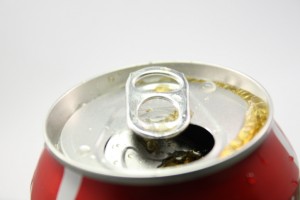How Many Minutes of Jogging is That Soda Worth?
 Despite being the bearer of a given food’s most valuable information, the food label goes too often ignored by consumers. What’s more, even when it is read, people don’t always understand what they’re reading. And now, with the newest health reform bill requiring restaurants to include calorie content on menu boards, not to mention the recent discussion around front-of-pack labeling on food products, the most appropriate way to present calorie information is getting to be a very important topic to consider.
Despite being the bearer of a given food’s most valuable information, the food label goes too often ignored by consumers. What’s more, even when it is read, people don’t always understand what they’re reading. And now, with the newest health reform bill requiring restaurants to include calorie content on menu boards, not to mention the recent discussion around front-of-pack labeling on food products, the most appropriate way to present calorie information is getting to be a very important topic to consider.
Imagine this: What if the food label did not tell you calorie information, but instead how many minutes you would have to jog to burn the equivalent amount of calories in the product? Would you be as likely to eat a high-cal food if you knew how many treadmill hours it was worth?
A research team led by Sara Bleich at Johns Hopkins Bloomberg School of Public Health decided to investigate that very idea. In four inner-city convenience stores, they used drink cases stocked full of sugary beverages to display colorful signs about the calorie information — critically however, not all signs were the same: some had the standard calorie amount as it is already listed on the drink bottle, some listed calories as a percentage of total daily calories, and others listed relative calorie information by comparing the total amount of calories to how many minutes of jogging the consumer would need to burn off the drink’s calories. The result? People bought half as many sugar-sweetened beverages when the relative calorie information was displayed on the drink case.
“We wanted to test relative calorie information, given that most Americans have low nutritional literacy,” says Bleich, adding that they’d aimed to use an approach to calorie labeling that required a minimum of mental processing, since previous research suggests that would be most likely to actually get people to change their behavior.
And to really drive the point, they’d deliberately chosen one of the most disliked physical activities they could think of on their experimental labels. “We intentionally selected jogging, rather than potentially more enjoyable physical activities such as basketball or dancing, because of research suggesting that unfavorable information is more persuasive to consumers,” says Bleich.
As the new calorie labeling law goes into effect, it becomes increasingly important to provide calorie information in a way that will influence the consumer to purchase healthier food items. Research such as Bleich’s is instrumental in understanding the labeling presentation and impact on behavior. “We felt it was important to explore the most effective strategies for presenting caloric information to consumers, especially since the regulation is somewhat ambiguous as to how those calories should be reported,” says Bleich.
Photo by Ryan McVay


